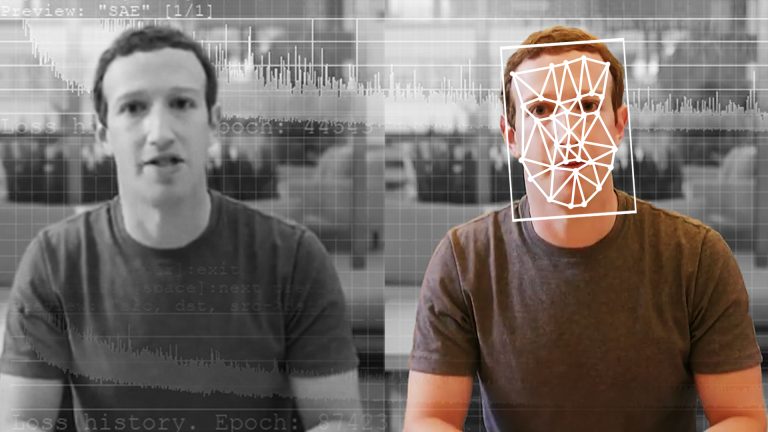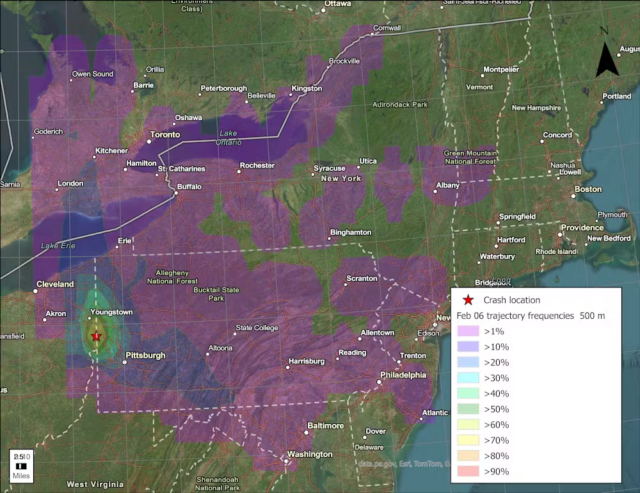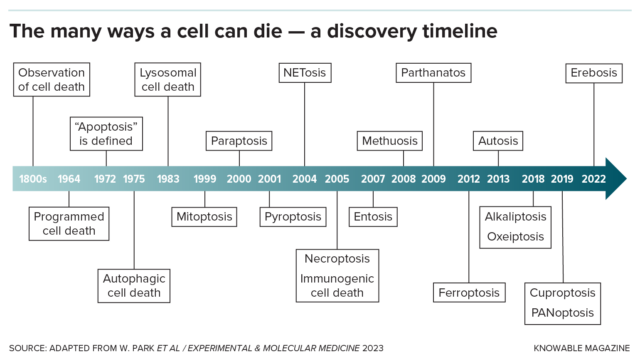Google, Microsoft, and Perplexity promote scientific racism in AI search results
AI-powered search engines are surfacing deeply racist, debunked research.

LOS ANGELES, CA – APRIL 17: Members of the National Socialist Movement (NSM) salute during a rally on near City Hall on April 17, 2010 in Los Angeles, California. Credit: David McNew via Getty
AI-infused search engines from Google, Microsoft, and Perplexity have been surfacing deeply racist and widely debunked research promoting race science and the idea that white people are genetically superior to nonwhite people.
Patrik Hermansson, a researcher with UK-based anti-racism group Hope Not Hate, was in the middle of a monthslong investigation into the resurgent race science movement when he needed to find out more information about a debunked dataset that claims IQ scores can be used to prove the superiority of the white race.
He was investigating the Human Diversity Foundation, a race science company funded by Andrew Conru, the US tech billionaire who founded Adult Friend Finder. The group, founded in 2022, was the successor to the Pioneer Fund, a group founded by US Nazi sympathizers in 1937 with the aim of promoting “race betterment” and “race realism.”

Hermansson logged in to Google and began looking up results for the IQs of different nations. When he typed in “Pakistan IQ,” rather than getting a typical list of links, Hermansson was presented with Google’s AI-powered Overviews tool, which, confusingly to him, was on by default. It gave him a definitive answer of 80.
When he typed in “Sierra Leone IQ,” Google’s AI tool was even more specific: 45.07. The result for “Kenya IQ” was equally exact: 75.2.
Hermansson immediately recognized the numbers being fed back to him. They were being taken directly from the very study he was trying to debunk, published by one of the leaders of the movement that he was working to expose.
The results Google was serving up came from a dataset published by Richard Lynn, a University of Ulster professor who died in 2023 and was president of the Pioneer Fund for two decades.
“His influence was massive. He was the superstar and the guiding light of that movement up until his death. Almost to the very end of his life, he was a core leader of it,” Hermansson says.
A WIRED investigation confirmed Hermanssons’s findings and discovered that other AI-infused search engines—Microsoft’s Copilot and Perplexity—are also referencing Lynn’s work when queried about IQ scores in various countries. While Lynn’s flawed research has long been used by far-right extremists, white supremacists, and proponents of eugenics as evidence that the white race is superior genetically and intellectually from nonwhite races, experts now worry that its promotion through AI could help radicalize others.
“Unquestioning use of these ‘statistics’ is deeply problematic,” Rebecca Sear, director of the Center for Culture and Evolution at Brunel University London, tells WIRED. “Use of these data therefore not only spreads disinformation but also helps the political project of scientific racism—the misuse of science to promote the idea that racial hierarchies and inequalities are natural and inevitable.”
To back up her claim, Sear pointed out that Lynn’s research was cited by the white supremacist who committed the mass shooting in Buffalo, New York, in 2022.
Google’s AI Overviews were launched earlier this year as part of the company’s effort to revamp its all-powerful search tool for an online world being reshaped by artificial intelligence. For some search queries, the tool, which is only available in certain countries right now, gives an AI-generated summary of its findings. The tool pulls the information from the Internet and gives users the answers to queries without needing to click on a link.
The AI Overview answer does not always immediately say where the information is coming from, but after complaints from people about how it showed no articles, Google now puts the title for one of the links to the right of the AI summary. AI Overviews have already run into a number of issues since launching in May, forcing Google to admit it had botched the heavily hyped rollout. AI Overviews is turned on by default for search results and can’t be removed without resorting to installing third-party extensions. (“I haven’t enabled it, but it was enabled,” Hermansson, the researcher, tells WIRED. “I don’t know how that happened.”)
In the case of the IQ results, Google referred to a variety of sources, including posts on X, Facebook, and a number of obscure listicle websites, including World Population Review. In nearly all of these cases, when you click through to the source, the trail leads back to Lynn’s infamous dataset. (In some cases, while the exact numbers Lynn published are referenced, the websites do not cite Lynn as the source.)
When querying Google’s Gemini AI chatbot directly using the same terms, it provided a much more nuanced response. “It’s important to approach discussions about national IQ scores with caution,” read text that the chatbot generated in response to the query “Pakistan IQ.” The text continued: “IQ tests are designed primarily for Western cultures and can be biased against individuals from different backgrounds.”
Google tells WIRED that its systems weren’t working as intended in this case and that it is looking at ways it can improve.
“We have guardrails and policies in place to protect against low quality responses, and when we find Overviews that don’t align with our policies, we quickly take action against them,” Ned Adriance, a Google spokesperson, tells WIRED. “These Overviews violated our policies and have been removed. Our goal is for AI Overviews to provide links to high quality content so that people can click through to learn more, but for some queries there may not be a lot of high quality web content available.”
While WIRED’s tests suggest AI Overviews have now been switched off for queries about national IQs, the results still amplify the incorrect figures from Lynn’s work in what’s called a “featured snippet,” which displays some of the text from a website before the link.
Google did not respond to a question about this update.
But it’s not just Google promoting these dangerous theories. When WIRED put the same query to other AI-powered online search services, we found similar results.
Perplexity, an AI search company that has been found to make things up out of thin air, responded to a query about “Pakistan IQ” by stating that “the average IQ in Pakistan has been reported to vary significantly depending on the source.”
It then lists a number of sources, including a Reddit thread that relied on Lynn’s research and the same World Population Review site that Google’s AI Overview referenced. When asked for Sierra Leone’s IQ, Perplexity directly cited Lynn’s figure: “Sierra Leone’s average IQ is reported to be 45.07, ranking it among the lowest globally.”
Perplexity did not respond to a request for comment.
Microsoft’s Copilot chatbot, which is integrated into its Bing search engine, generated confident text—“The average IQ in Pakistan is reported to be around 80”—citing a website called IQ International, which does not reference its sources. When asked for “Sierra Leone IQ,” Copilot’s response said it was 91. The source linked in the results was a website called Brainstats.com, which references Lynn’s work. Copilot also referenced Brainstats.com work when queried about IQ in Kenya.
“Copilot answers questions by distilling information from multiple web sources into a single response,” Caitlin Roulston, a Microsoft spokesperson, tells WIRED. “Copilot provides linked citations so the user can further explore and research as they would with traditional search.”
Google added that part of the problem it faces in generating AI Overviews is that, for some very specific queries, there’s an absence of high quality information on the web—and there’s little doubt that Lynn’s work is not of high quality.
“The science underlying Lynn’s database of ‘national IQs’ is of such poor quality that it is difficult to believe the database is anything but fraudulent,” Sear said. “Lynn has never described his methodology for selecting samples into the database; many nations have IQs estimated from absurdly small and unrepresentative samples.”
Sear points to Lynn’s estimation of the IQ of Angola being based on information from just 19 people and that of Eritrea being based on samples of children living in orphanages.
“The problem with it is that the data Lynn used to generate this dataset is just bullshit, and it’s bullshit in multiple dimensions,” Rutherford said, pointing out that the Somali figure in Lynn’s dataset is based on one sample of refugees aged between 8 and 18 who were tested in a Kenyan refugee camp. He adds that the Botswana score is based on a single sample of 104 Tswana-speaking high school students aged between 7 and 20 who were tested in English.
Critics of the use of national IQ tests to promote the idea of racial superiority point out not only that the quality of the samples being collected is weak, but also that the tests themselves are typically designed for Western audiences, and so are biased before they are even administered.
“There is evidence that Lynn systematically biased the database by preferentially including samples with low IQs, while excluding those with higher IQs for African nations,” Sear added, a conclusion backed up by a preprint study from 2020.
Lynn published various versions of his national IQ dataset over the course of decades, the most recent of which, called “The Intelligence of Nations,” was published in 2019. Over the years, Lynn’s flawed work has been used by far-right and racist groups as evidence to back up claims of white superiority. The data has also been turned into a color-coded map of the world, showing sub-Saharan African countries with purportedly low IQ colored red compared to the Western nations, which are colored blue.
“This is a data visualization that you see all over [X, formerly known as Twitter], all over social media—and if you spend a lot of time in racist hangouts on the web, you just see this as an argument by racists who say, ‘Look at the data. Look at the map,’” Rutherford says.
But the blame, Rutherford believes, does not lie with the AI systems alone, but also with a scientific community that has been uncritically citing Lynn’s work for years.
“It’s actually not surprising [that AI systems are quoting it] because Lynn’s work in IQ has been accepted pretty unquestioningly from a huge area of academia, and if you look at the number of times his national IQ databases have been cited in academic works, it’s in the hundreds,” Rutherford said. “So the fault isn’t with AI. The fault is with academia.”
This story originally appeared on wired.com
Google, Microsoft, and Perplexity promote scientific racism in AI search results Read More »






























